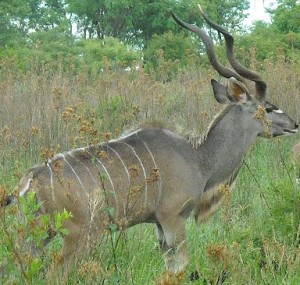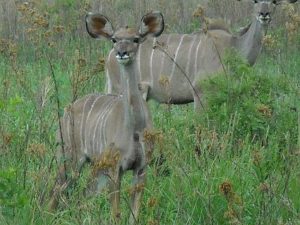Archive for 'South Africa'
helicopter ride over cape town
Goin' Down Down: Bloggers Mine Gold in South Africa
On the edge of the Richtersveld
[[Show as slideshow]]
High on SA
 Nadine Khan of Brand South Africa came with us on the bloggers’ tour. Here’s what it has meant to her:
Nadine Khan of Brand South Africa came with us on the bloggers’ tour. Here’s what it has meant to her:
I woke up today a privileged South African. I have spent the last six days in the presence of some of the top US and local bloggers.
Together we have been exploring this beautiful country in almost every possible way imaginable. We have driven there by car, bus and 4 x 4. We have flown there by 707 Boeing, charter and helicopter and we even braved the stormy seas by ship.
All in an attempt to showcase the South African firsts, which are inventions or technology that South Africa is the first to use in the world. Our destinations have been broad and vast and the hours spend on the road has been long and ardours. We have seen it all. From launching satellites in space to bushmen rock paintings. From a helicopter scenic flight over the Cape Peninsula to going down the worlds deepest mine, we have done it.
Of course I came prepared. We had spend hours debating the programme of our tour to ensure that the best of the best is showcased as is, no gimmicks no false PR just the truth about what South Africa has to offer.
Or so I thought.
You see for the last six days I have had this nagging feeling of white guilt that just refuses to go away. Nothing on earth could have prepared me for this emotional awakening which I am experiencing.
Now for those of you that are familiar with our apartheid history will sigh and lament with me about our atrocious deeds committed by us to the less fortunate. But let me correct you the white guilt that I am currently suffering, is a fate far worse.
You see I have spend the last fifteen years apologising and lamenting the past and up until this trip would have probably had spend the next fifteen years in much the same frame of mind.
I would willingly have been part of a lost generation. Part of the generation of people who did not really cause apartheid nor fought the cause to end it.
So what happened you ask?
I was humbled by the sheer magnitude of passion of ordinary South Africans. I was touched and inspired by the everyday ordinary heroes of this enigmatic country.
At !Kwa Thu I met a San bushman, who despite the fact that there are only four people left in the world today that can still speak his language chooses to speak Afrikaans because it is the language his mother taught him.
In Alexander Bay I met a man and his wife who gave up the rat race and returned home to travel 400 kms per day in the arid dessert to promote the rock paintings and nomadic lifestyle of the bushman in an attempt to give back and preserve the Koi and San communities.
In Stellenbosch and in the Magaliesberg I met coloured people who are so proud of their French and Dutch colonial heritage that they wear it with pride.
In Melrose Arch I met people who are so immensely proud of our European pop culture, that they are creating a language and a platform all their own which rivals the best in the world.
Today I understand that I really do wake up in a country that is Alive with Possibility.
Today I salute these ordinary South Africans, not because of their ability to preserve their beliefs but for their ability to awaken mine.
I might not be the one to save the whales or the dolphins, to preserve and develop the cape fynbos or the famous one who eradicates crime and discrimination against woman.
But I am certainly the one South African that will tell you that your post apartheid duty is to create positive South African stories, here in your own backyard – and that if you are truly lucky that someday, somewhere you may be saluted as the everyday ordinary hero that inspired a nation’s transformation.
Cradle of Mankind's Grave Lessons
Friday afternoon’s stop on the South African endless bus/plane tour was in the area humbly named “The Cradle of Mankind.” Sterkfontein Caves in Gauteng’s fossilized remains are to paleontologists as Hollywood is to the paparazzi — a seemingly endless supply of somewhat human-looking beings to be examined from every angle.
The caves, are rich in hominid fossils (more than 700) because of a confluence of “lucky” circumstances. “People” and animals either recently or about to be dead were washed or fell into a series of deep holes. Then, limestone leaked into the holes, and fossilized the remains of the day for millennia, according to researcher Dominic Stratford who led our tour through the dark and dusty caves. He believes that the abundance of human and animal bones may come from the tendency of leopards to store their kills in trees that might have hung over the hole.
One of the most famous finds at Sterkfontein is Little Foot, a pre-human whose skeleton was nearly completely (97 percent) found.
Stratford regaled us with an interesting theory of how eating more meat may have helped us to walk erect. According to Stratford, hominids began switching from eating nuts and wild grasses to eating more protein, including other hominids who may have been killed by prey or by each other. This may have also been because of a gene mutation that caused smaller jaws. Stratford says chewing protein such as meat requires smaller jaw muscles that stretch to the base of the skull, so there’s more room for a larger brain. Larger brains helped with developing tools that moved us gradually out of the stone age. So take that granola-lovers, if it weren’t for munching on recently departed cousins, we might still be knuckledraggers!
Anthropology and paleontology were never presented in a way this interesting when I was in school.
Where Are Her Chips?
Another great ad from Nando’s. Some may consider it in questionable taste. Hat tip notaniche.com
!Khwa ttu: Sustainable Cultural Preservation
The surprise highlight of this trip for me so far hasn’t been a helicopter flight, luxury resort, or journey down three and half kilometers to the world’s deepest mine. No, what has impressed me the most was a lunch-time visit to !Khwa ttu, a culture and education center for the San people of Southern Africa that sustains its operations through a tourism lodge and restaurant.
!Khwa ttu’s restaurant and gift shop.
Trip out on this: if you trace your ancestry from your parents to your parent’s parents and their parents and so on for thousands of generations (back 60,000 years ago), then you’ll find that you share a direct ancestor of this man:
That’s Andries, a 30-year-old from the ‡Khomani community of the Kalahari who learned how to become a tour guide at !Khwa ttu. Along with his colleague Kerson, Andries taught us how to pronounce the klicks and klacks of the various San languages.
Video by Simon Barber.
After our lesson in Khoi and San languages we were shown the following video about the making of the photographic exhibit “The San and the Camera.” The Khoi and San peoples have long been exoticized on the covers of travel pamphlets, in museum exhibits, and in movies like The Gods Must Be Crazy. But their current reality, marked frequently by discrimination and poverty, is ignored by most media.
You can see a more general video about the !Khwa ttu center on their website. What has me excited about the project is that it is able to preserve dying cultures and languages, generate jobs, teach new skills, and educate others all while staying sustainable from its tourism revenue.

If you ever visit Cape Town I highly recommend taking the hour drive to !Khwa ttu to check things out. Their meals are delicious, the photographic exhibit is impressive, and the staff are absolutely lovely. Plus, you’d be supporting a very good cause. Now we just need to get them blogging. ![]()
Game On at Plumari Conservation Reserve
I’ve never experienced anything quite like sharing a sunrise with the large game animals of Africa. Riding in an open air Jeep, we bounced along for three hours and encountered herds of giraffe, kudu (nice ears buddy!) wildebeests, and red hat antelope.
We also encountered two female as well as the one male lion on the preserve. The rains from the previous night left the “roads” muddy, forcing us to abandon the Jeep and push it out of the muck. Forget the need for caffeine when you’re hoping to get your vehicle moving while .
We also encountered a few zebra, oryx, water bug (another kind of antelope), gazelles, warthogs, plovers, and oh-soo-cute baby jackals.
According to our guide, Ansele Benjamin, all of the species except for the oryx were native to the Magaliesberg region. It was stunning to see giraffe gallop across the plain in the orange light of the early morning sun. Benjamin said the lions mostly fend for themselves by preying on kudu and water bugs as they want to allow the animals to live as naturally as possible. The lions were raised in captivity and aren’t fully up to snuff in hunting, so occasionally they are given meat. Invasive species of plants and trees that were brought in by farmers are being taken out to return the environment to its native state.
Most of the species had been driven out over the centuries because of farming and wars, including major battles of the Boer War in the early 20th century. Author Vincent Carruthers, who I had the privilege of hearing speaking, has written about how the region has played a major party in determining South Africa’s history because of the conflicts that took place between native, German and dutch troops.
Look for more pictures to come on Flickr.
Eight Nama Dancing
More from the banks of the Orange River. This is a truly wonderful place. Our host was Johan De Waal of Richtersveld Tours. Pictures of where he took us, and who we met, follow.
Change in South African Housing
Here is a choppy and quick video that compares the current state of “shantytown” housing in Soweto with the homes that are being built to replace them. Eric, a local, narrates.
The shantytown section is particularly short, so go through the video a couple of times to see the difference. Also keep in mind that this settlement looked much better than most of the others that we’ve seen. Shacks are spaced farther apart and seem to be in better condition than the norm.
The improvements in infrastructure – water, sewage, electricity – will be even more important than what is considered the increase in dignity in moving out of the shacks. The government can’t build them fast enough, however, and there have been reports that many if not most of the new homes are sub-standard.






